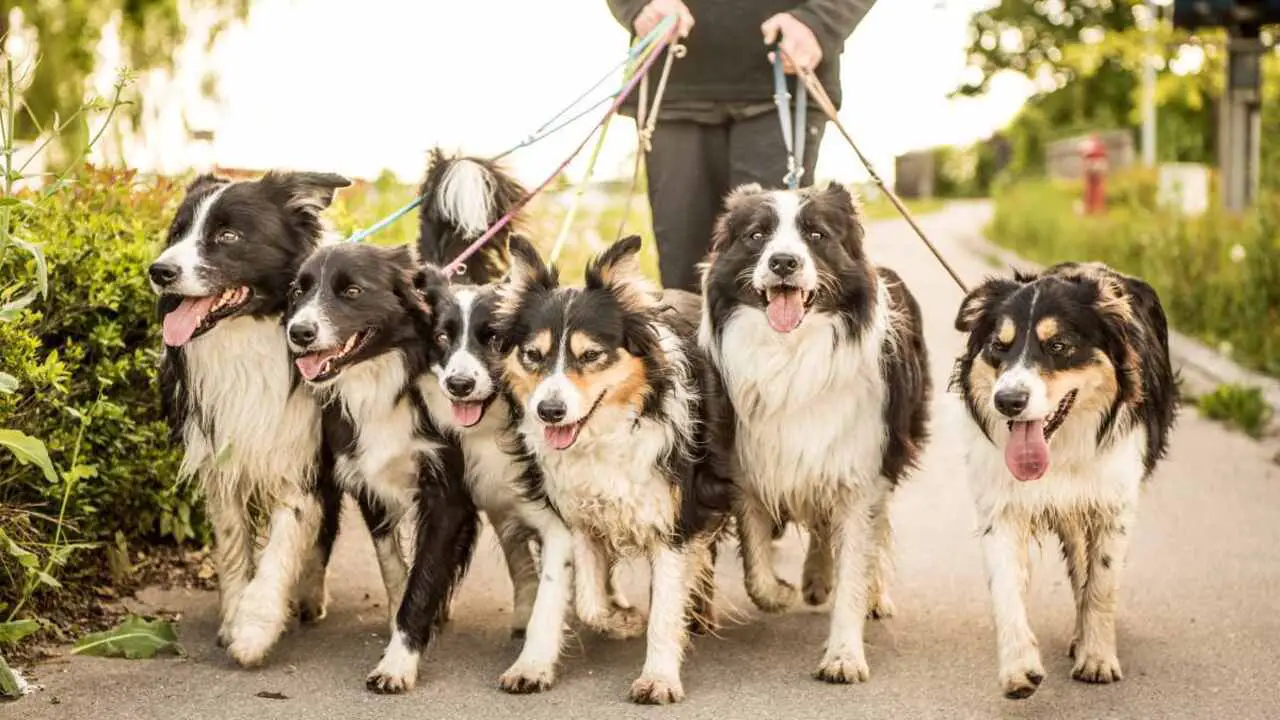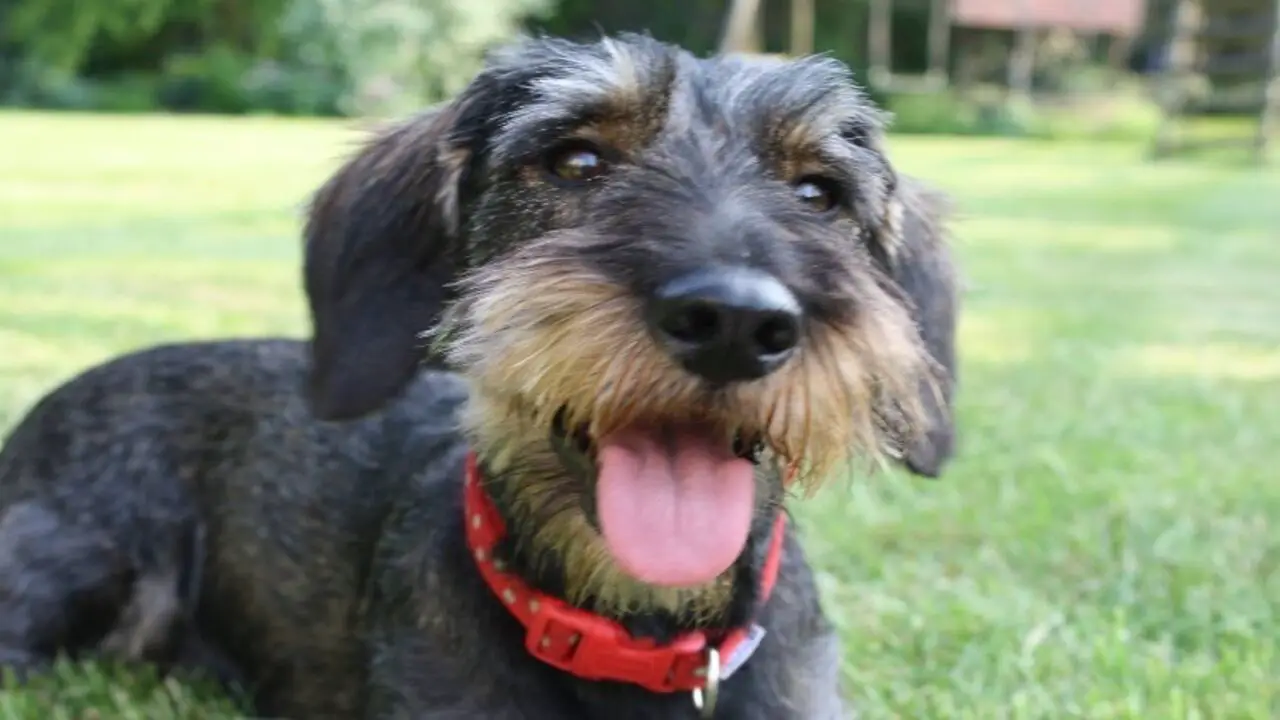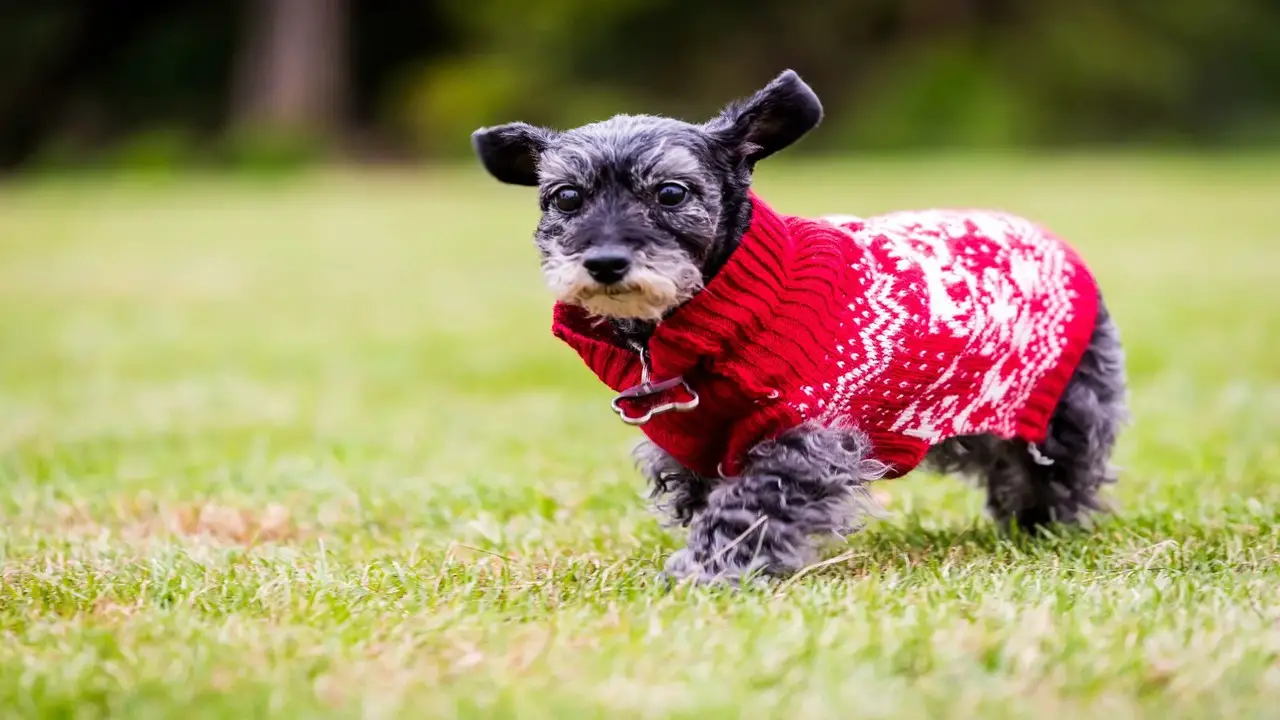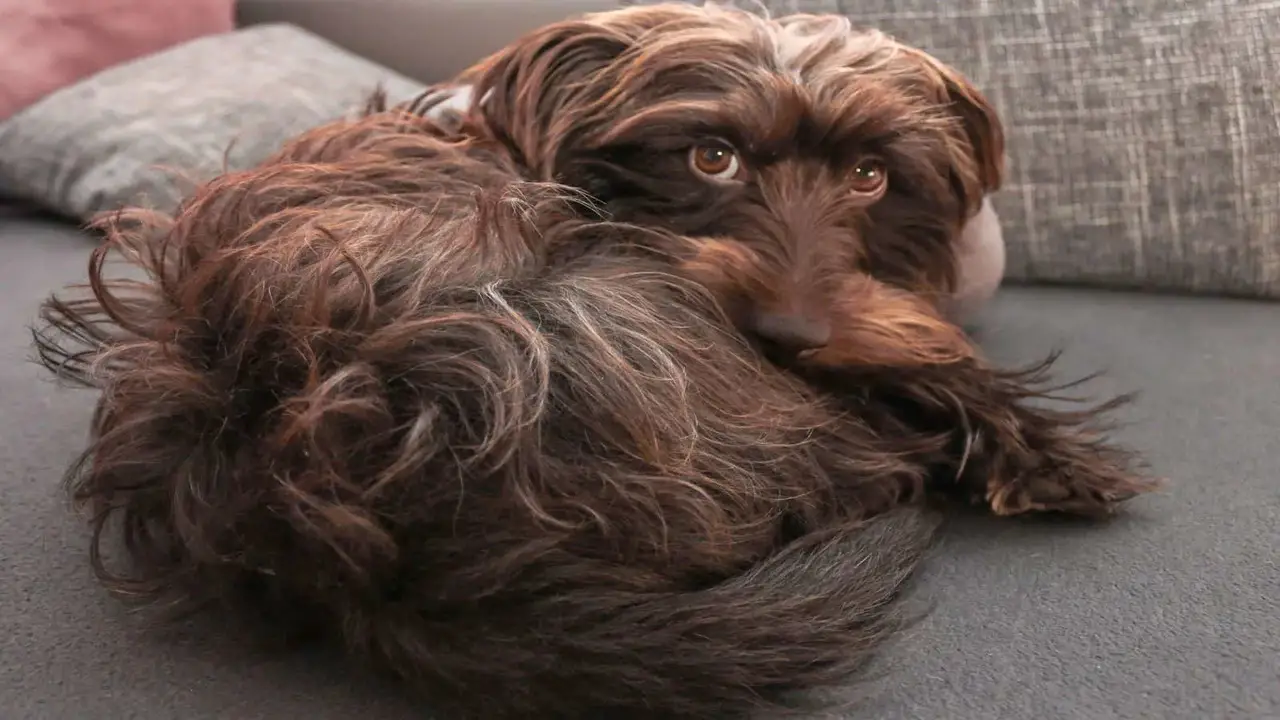The Schnauzer Dachshund mix is a unique and charming breed that has become a favorite playtime companion among dog lovers. This hybrid breed is a cross between the Miniature Schnauzer and the Dachshund, resulting in a stunning combination of traits from both breeds.
The Schnauzer-Dachshund mix is popular for its playful and energetic personality, making it an excellent family dog companion for families and individuals. With their distinct physical characteristics, the Schnauzer-Dachshund mix is easy to spot. They typically have a long body, short legs, a bushy beard, and eyebrows that resemble their Schnauzer parent.
Additionally, their friendly and loyal nature makes them popular for therapy and emotional support dogs. Here, we will delve into the history and characteristics of the Schnauzer-Dachshund mix, including their temperament, grooming needs, and health concerns.

Breed Characteristics

Schweenies are intelligent dogs that require regular exercise and mental stimulation to stay happy and healthy. They are also popular for their love of playtime and socialization with human friends and other dogs. If you’re looking for a small dog with lots of personality, the Schweenie might be the perfect match for you. You should be aware of several key characteristics of the Schnauzer-Dachshund Mix. Some of these include:
- They’re intelligent and agile dogs that make great family pets.
- Schnauzer Dachshunds are popular for their long, thin fur coat, which are difficult to care for.
- They are prone to health problems, including hip dysplasia and eye issues.
- They require a lot of exercise, so plan to spend plenty of time with them daily.
About The Schnauzer Dachshund Mix A To Z

Schnauzers are known for their intelligence and trainability, making them ideal law enforcement candidates. They are also sturdy dogs that are good at protecting their owners from dangerous situations. Dachshunds are popular for their speed and agility, which makes them great for security work or hunting. Here is our detailed overview of the Schnauzer Dachshund mix:
- Name: Schnauzer-Dachshund Mix
- Scientific Name: Canis lupus familiaris
- Other names: Schweenie, Doxie-Schnauzer
- Origin: United States.
- Color: black, brown, gray, and white.
- Breed Group: This mix is not recognized by any major kennel club as its breed. However, it may be classified under the “Designer Dog” category.
- Height: On average, 10 to 15 inches tall at the shoulder.
- Weight: Typically weighs between 10 to 30 pounds.
- Skin type: Their skin type can range from smooth to wiry hair, depending on which parent’s genes are dominant.
- Temperament: Friendly, intelligent, and energetic.
- Trainability: These dogs are generally eager to please and respond well to positive reinforcement training methods. They are intelligent and quick learners.
- Litter size: The average litter size for this mix is around 4 to 6 puppies.
- Life Expectancy: they live between 12 and 15 years.
- Price: $1,000 – $3,000.
History & Origin
The Doxie-Schnauzer, also known as the Schweenie, is a hybrid breed that combines the characteristics of the Schnauzer and the Dachshund. While this mix’s exact history and origin are not well-documented, it is believed to have originated in the United States during the late 20th century when designer breeds started gaining popularity.
The Schweenie inherits traits from both parent breeds, including its small size, long body, and distinctive facial features. This mix is popular for its friendly and affectionate nature, making it a popular choice for families and individuals looking for a loyal companion.
Appearance
In terms of appearance, these dogs typically have a small to medium-sized body with a long torso and short legs, reminiscent of their Dachshund parent. They often have wiry coats or coarse coats in various Coat colors, including black, brown, and gray. Their heads are usually elongated with dark, round eyes and floppy ears. Overall, the Doxie-Schnauzer is a charming and distinctive breed that captures the best of its parent breeds in appearance.
Shedding
Knowing their shedding tendencies is important if you consider adding a Doxie-Schnauzer to your family. While every dog may vary, Doxie-Schnauzers are generally low to moderate shedders. This means they will still shed some hair, but not as much as breeds with longer or denser coats.
Regular grooming and brushing can help manage shedding and keep your pup’s coat healthy and clean. It’s also worth noting that factors such as diet, overall health, and the specific genetics of each dog can influence shedding patterns. If you have allergies or prefer a dog with minimal shedding, spending time with the breed mix to ensure compatibility is always a good idea before committing.
Temperament
The Doxie-Schnauzer, also known as a Schnoxie, is popular for its friendly and outgoing temperament. These dogs are typically affectionate and loyal and love being around their families. They are great with children with allergies and other pets, making them a wonderful addition to any household.
However, it’s important to note that individual temperaments can vary depending on genetics and upbringing. Proper socialization and training from an early age can help ensure that your Doxie-Schnauzer grows into a well-behaved and happy companion.
Life Span
The Doxie-Schnauzer, also known as a Schweenie, has an average lifespan of 12 to 15 years. This hybrid breed inherits traits from the Schnauzer and the Dachshund, resulting in a unique and lovable companion. While individual lifespan can vary depending on genetics and overall health, proper care, nutrition, and regular veterinary check-ups can help ensure that your Schweenie lives long and healthy.
Activity Level
The Doxie-Schnauzer is known for its moderate activity level. This hybrid breed enjoys daily walks and playtime but does not require excessive amounts of exercise. They adapt to different living situations, whether in a small apartment or a larger home with a yard. However, ensuring mental and physical stimulation to prevent boredom is important.
Interactive play is important, and games can be a great way to keep them entertained. Overall, the Doxie parent -Schnauzer, is a lively and playful companion that can fit well into various lifestyles.
Size & Weight Chart
- The Schnauzer-Dachshund Mix, also known as the Schweenie, is a small to medium dog breed.
- On average, adult Schweenies can weigh between 10 to 20 pounds.
- Their height can range from 8 to 14 inches at the shoulder.
- It’s important to note that individual dogs may vary in size and weight depending on their genetics and other factors.
Growth Chart
Here is a growth chart for Schnauzer-Dachshund Mixes to show how they may develop over time. Remember that this growth chart is just a general guideline and may not apply exactly to every Schnauzer-Dachshund Mix. If you have concerns about your pup’s growth or overall health, it’s always best to consult your veterinarian for personalized advice.
- Birth to 3 Months: During this stage, your Schnauzer-Dachshund Mix will experience rapid growth. They will start small and vulnerable but quickly gain weight and begin to develop their distinct features.
- 4 to 6 Months: By this age, your pup will have reached about half its adult size. They will still grow, but you can expect them to be more active and playful during this stage.
- 7 to 12 Months: Your Schnauzer-Dachshund Mix will continue to grow and fill out during these months. They may experience a growth spurt during this time, so be prepared for some changes in their appearance.
- 1 Year and Beyond: By the time your dog reaches one year old, they will be close to their full adult size. However, every dog is different, and individual growth rates may vary. Proper nutrition and regular exercise are important to support their healthy development.
Health Issues Schnauzer-Dachshund Mix

When considering adding a Schnauzer-Dachshund mix to your family, it is important to be aware of potential health concerns that may arise. Schnauzer-Dachshund mixes are a popular choice for people who want a friendly and playful dog, but they need to be aware of the health risks of this mix. The Schnauzer-Dachshund mix is prone to some common health problems, including:
- Hip Dysplasia: happens when the hip joint doesn’t fit correctly and can cause pain and lameness.
- Elbow Dysplasia: This condition in which the elbow joint doesn’t fit correctly and can cause pain and deformity.
- Bloat: This is a dangerous condition caused by filling your dog’s stomach with gas or water. It can eventually kill them if not treated quickly.
- Retinal Degeneration: is when the light receptors in your dog’s eyes start to die off, leading to blindness.
- A Hip Fracture is an injury to the hip bone that can lead to chronic pain.
Feeding Chart of Schnauzer-Dachshund Mix

- Age 8-12 Weeks: Feed 3-4 small meals daily, consisting of high-quality food puppy.
- Age 3-6 Months: Reduce to 3 meals daily, still using puppy food.
- Age 6-12 Months: Transition to adult dog food and feed 2 meals daily.
- Age 1 Year and Older: Continue feeding 2 meals daily, adjusting portion sizes based on activity level and weight management goals.
Always provide fresh water and avoid overfeeding or free feeding, as this mix can be prone to weight gain. It’s always best to consult a veterinarian for specific dietary recommendations for your Schnauzer-Dachshund Mix.
How to Groom Schnauzer-Dachshund Mix Health

Grooming your Schnauzer-Dachshund Mix is important to maintaining their health and well-being. Regular grooming can help to keep their coat shiny and healthy, prevent matting and tangles, and reduce the risk of skin problems. Grooming your Schnauzer-Dachshund Mix is essential for their health and well-being. Here are some tips to help you out:
- Keep their coats healthy by regularly brushing and washing them in cool water. If their coat is wet for over two minutes, add a little canine shampoo to help remove any dirt or odor.
- Ensure their teeth are clean and healthy by brushing them twice a week and reviewing any teeth that may be decaying or crooked with a piece of dental floss or toothpick.
- Check their ears monthly and clean them if they get dirty or wet. You can also use ear oil to keep them moisturized and infection-free.
- Check their anal glands every month or as necessary, and remove any excess fluid if it’s yellowish green in color or foul smelling. If the gland enlarges, consult your veterinarian immediately.
- Avoid letting your Schnauzer-Dachshund Mix get overweight. Obesity can lead to numerous health problems, including heart disease, diabetes, and some forms of cancer. Instead of giving them treats all the time, try offering them small chunks of fresh, nutritious foods such as fruits, vegetables, or whole-grain bread instead.
Popular Names
Schnauzer-Dachshund Mixes, also known as Schweenies, is an adorable and affectionate breed that makes great pets. If you’re looking for the perfect name for your new furry friend, Here are some of the most popular names for Schnauzer-Dachshund Mix:
- Junior
- Benny
- Buddy
- Mojo
- Bella
Schnauzer-Dachshund Mix Adoption Process

If you are interested in adopting a Schnauzer-Dachshund Mix, there are a few steps you can expect to take during the adoption process. Following these steps, you can navigate the adoption process smoothly and bring your new furry friend home.
- Find reputable rescue organizations or breeders specializing in Schnauzer-Dachshund Mixes.
- Fill out an adoption application. This application will typically ask for information about your living situation, previous pet ownership experience, and your ability to provide a loving and stable home for the dog.
- Meet the dog. Once your application is approved, you will have the opportunity to meet the Schnauzer-Dachshund Mix in person. This is a chance to get to know the dog’s personality and see if they fit your family well.
- Complete a home visit. Some rescue organizations may require a home visit to ensure your home is safe and suitable for the dog.
- Pay adoption fees. Adoption fees can vary depending on the organization, but they typically cover the cost of vaccinations, spaying/neutering, and other veterinary care the dog has received while in their care.
- Sign an adoption contract. This contract will outline the terms of the adoption and any specific requirements or expectations that come with adopting a Schnauzer-Dachshund Mix.
How Do You Take Care Of A Schnauzer-Dachshund Mix?

So you’ve decided to add a Schnauzer-Dachshund Mix to your family, and now you’re wondering how you will take care of them. Luckily, there’s no need to worry – this hybrid dog breed is easy to care for. Here are some tips on how you can keep them healthy skin disorders and happy:
- Feed them a balanced diet that includes meat and vegetables.
- Make sure they have plenty of exercises of water and exercise regularly.
- Avoid putting them in hot environments or leaving them alone for long periods.
- Keep their nails trimmed and clean their teeth twice a week.
Schnauzer-Dachshund Mix Breeding Cost Chart
- The cost of breeding a Schnauzer-Dachshund Mix can vary depending on various factors such as the breeder’s location, reputation, and the parent dogs’ health and pedigree.
- On average parent, the cost of breeding a Schnauzer-Dachshund mix can range from $800 to $2,500.
- This cost typically includes genetic testing, health conditions checks, vaccinations, and care for the parent dogs during pregnancy and after birth.
- It is important to note that responsible breeders prioritize the health and well-being of their dogs over profit, so it is advisable to choose a reputable breeder who follows ethical breeding practices.
Pros And Cons Of Schnauzer-Dachshund Mix

Introducing the Schnauzer-Dachshund mix. This unique dog mixes two popular breeds – the Schnauzer and the Dachshund. As a Schnauzer-Dachshund mix, this dog has all the characteristics of both breeds, making it an extremely versatile and loving pet.
Owning a Schnauzer-Dachshund mix has pros and cons, so weighing them carefully before deciding is important. Here are the main points to consider:
Pros:
- They’re both loyal dogs that make great family pets.
- They’re intelligent and easy to train, so they’ll be able to do tasks like fetching and obedience training sessions quickly.
- Schnauzers are known for being very active lifestyle dogs, meaning they can keep you entertained for hours.
- They have a lot of energy and love to play, which is good because they will surely burn off any excess energy actively. They won’t be destructive behavior or noisy when you’re not home.
- Dachshund mixes often have thick coats of fur that protect them from the cold weather, making them a viable option for those in colder climates.
Cons:
- Schnauzers can be quite high maintenance, requiring regular brushing and grooming.
- This is especially true if they are kept indoors.
- They can also be difficult to potty train – something that may not be an issue if you live in an apartment or terraced house but could become an issue if you live in a house with multiple floors.
Fun Facts About Schnauzer-Dachshund Mix

Did you know that the Schnauzer-Dachshund mix, also known as the Schweenie, is a relatively new designer breed? This incredible family pup combines two beloved breeds: the Miniature Schnauzer and the Dachshund. They are known for their small size, long bodies, and playful personalities. Here are some more fun facts about the Schweenie:
- Schnauzers Dachshunds are one of the oldest dog breeds in the world, dating back to the 19th century.
- They’re both originally from Germany and used as working dogs.
- Schnauzers have a long history of being used as police dogs in Europe, while Dachshunds became popular as hunting purposes dogs in Britain and America.
- These breeds make great family pets – they’re loyal, loving companions who enjoy playing games and going for walks.
- The Schnauzer-Dachshund Mix is one of the most popular crossbreeds in the world due to its friendly personality and ability to share characteristics from both breeds.
Conclusion
These two mixed breeds are often confused easily, but there’s no doubt about them being adorable cheerful companions. However, remember not to expose this dog to extreme temperatures as its coat can get damaged. Aside from that, your Schnauzer Dachshund mix will make a great addition to your family.
Here, we’ve discussed a guide to the Schnauzer-Dachshund Mix. If you want one smart enough to get along with other pets and doesn’t bark at strangers all day, this mix might be your best choice for children. Ensure you buy only from good breeders who use ethical breeding practices when creating new mixes like this.
Frequently Asked Questions
[rank_math_rich_snippet id=”s-5db9fc7b-a22b-40da-be5b-2c8b97368f9b”]